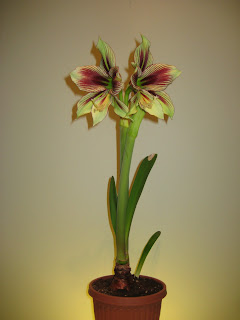 |
| Photograph by Kelly Butts |
Choosing houseplants for low light spaces can be a bit daunting. Low light levels are defined as any location in your home 8 or more feet away from a large window with no direct light. Areas such as hallways, offices, basements, a room with heavy window coverings, or small windows would all be considered low light. There are still some great choices in plant selection for low light areas. Here is a list of my top 10, easy to grow houseplants for low light conditions:
Pothos
Epipremnum aureum
 |
| Photograph by Paul Gellatl |
 |
| Photograph by Kelly Butts |
Size: Trailing plant to 8 feet.
Philodendron
Philodendron hederaceum oxycardium
 |
| Photograph by Kelly Butts |
 |
| Photograph by Paul Gellatly |
Size: Climbing or Trailing to 8+ feet.
Snake Plant
Sansevieria trifasciata
 |
| Photograph by Kelly Butts |
 |
| Photograph by Paul Gellatly |
Size: 6"-4 feet tall (depending on variety)
Zeezee Plant
Zamioculcus zamiifolia
 |
| Photograph by Paul Gellatly |
 |
| Photograph by Paul Gellatly |
Size: 2 to 3 feet
Arrowhead Vine
Syngonium podophyllum
 |
| Photograph by Paul Gellatly |
 |
| Photograph by Paul Gellatly |
Size: Climbing or Trailing 3-4 feet.
Cast-Iron Plant
Aspidistra elatior
 |
| Photograph by Paul Gellatly |
 |
| Photograph by Paul Gellatly |
Chinese Evergreen
 |
| Photograph by Paul Gellatly |
 |
| Photograph by Paul Gellatly |
Size: To 3 feet tall.
Dieffenbachia
Dieffenbachia spp.
 |
| Photograph by Paul Gellatly |
Size: 2-6 feet tall (depending on variety)
Peperomia
 |
| Photograph by Paul Gellatly Peperomia puteolata |
 |
Photograph by Paul Gellatly
Peperomia caperata
|
Size: 4-12 Inches (depending on variety)
Peace Lily
Spathiphyllum sp.
 |
| Photograph by Paul Gellatly |
 |
| Photograph by Paul Gellatly |
 |
| Photograph by Paul Gellatly |
Tips for Success: Low to medium light; 68-85 degrees F.; Prefers damp soil, and shouldn't be left to dry out completely between watering.
Size: 3-6 feet
All of these plants are readily available at garden centers worldwide. If you have a low light area in your home or office that needs some livening up... why not give one of these choices a try?

















